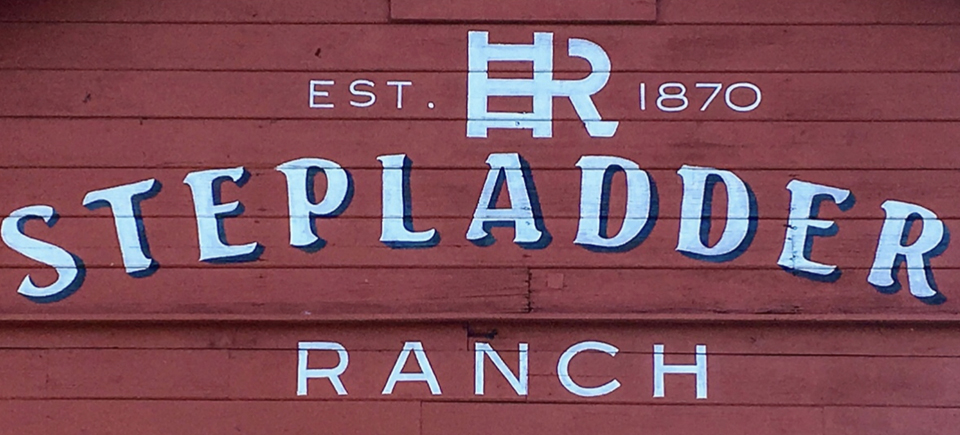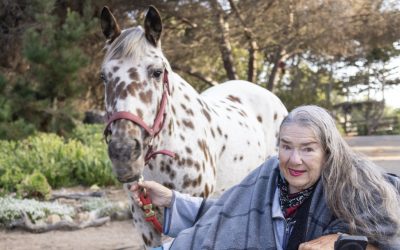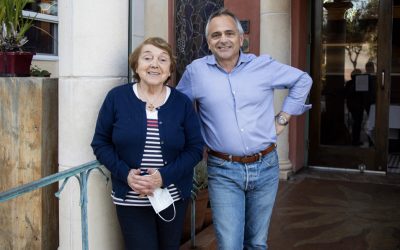I love cheese and wine, especially when local and paired together, so I headed to Stepladder Ranch (www.stepladdercreamery.com), a farmstead creamery just north of Cambria on San Simeon-Monterey Creek Road.
Jack Rudolph roamed the ranch as a boy after his grandfather bought it in the 1970s. But Jack never considered running cattle or becoming a farmer himself. Then later while living in Palo Alto, he began making cheese in his kitchen from fresh goat milk. Eventually, he left the tech world and moved to Stepladder, taking over where his grandfather left off.
Jill Hammond met me at the gate. I drove behind her black-bed ATV and parked near her Tiny House. She opened the front door for a peek inside. I admired a lifestyle that centered on owning fewer things. “Bought it off Craig’s list,” she said.
Jill manages the ranch’s business developments. “Anything extra, like our cheese club and 5-bedroom, 4-bathroom Air B&B. We call it the Big House.”
But that day she played tour guide, leading me to a pen of LaMancha does, their bellies shaped like oil drums. This goat dairy breed is known for its gentle temperament and milk production high in butterfat. Does close to their due date watched us from a large pen.
“Do you want to go inside?” Jill asked.
I’d worn my ratty sneakers. “Let’s go.”
Tootsie, Grapenut, and Blondie crowded around, batting their hazel eyes while nibbling my shoelaces. A bearded stud named Steve ogled his harem from separate quarters.
Afterward, I tagged behind Jill to the barn, erected in 1915 by a Danish barn-builder. Jack Rudolph had it converted into a dairy and creamery for its 100th birthday. He continues to enjoy experimenting with cheese cultures from Europe.
During milking season up to six goats stand on the wire-mesh platform in the milking parlor. “Their teats are sanitized before the pumps are attached.” Jill pointed to a tank where milk is filtered before being pasteurized. “That time of year we pump two hours in the morning and two in the afternoon.”
Up to eight people take turns hand-wrapping 2,000 pieces of cheese a week. The cheese tasting room smelled like an herb sachet. I tried the Cabrillo (Spanish style), Bob Ross (cider washed rind), Rocky Butte (full goat gouda, aged at least 4 months), and bought a jar of avocado-citrus honey.
Gloucester Old Spot heritage hogs traipse freely over 150 acres. “They pig out on overripe avocados and whey from the creamery. Nothing is wasted,” Jill said, pausing to pet a large herd dog. “The tour doesn’t usually include the orchards, but I can show you around since it’s just the two of us.”
One-hundred-and-fifty different kinds of fruit trees grow on the ranch: Hass avocadoes, muskrat limes, pink lemonade limes, finger limes, guava, coffee berries, kiwi, and more. Passion fruit vines shoot up like weeds.
Chilacayote squash tendrils crept high into leafy branches of an avocado tree. Massive gourds, weighing between 12 and 14 pounds, hung overhead like ornaments. “Don’t stand in one place too long,” Jill quipped.
It was hard to tell one tree from another since vining plants used tree trunks as stakes. Jill picked a ripe dragon fruit. The pulp reminded me of kiwi, except red and sweeter. Delicious!
We stooped to check out a low hanging Buddha’s hand. The odd-looking fruit is segmented into finger-like sections. Unlike other citrus, it doesn’t have pulp or juice. It’s used mostly as a zest in desserts and in beverages such as vodka. The plant grows well in temperate climates and can be cultivated in pots on patios. Interesting . . . think I might give it a try.
Next stop: Stolo Family Vineyards (stolofamilyvineyards.com), east of town but close enough to the ocean to have foggy mornings and sunny afternoons. In 2002, Don and Charlene Stolo purchased the 53-acre property as a retirement project. Don likes to tell people, “I’ve never worked so hard in my life.”
In 2012, Stolo opened their wine-tasting room, producing eight hundred cases of wine a year. Now it’s about 3,000. General Manager Diego Aguirre met me in the tasting room and poured a sample from the top of the list.
“Approximately 13 acres are dry farmed,” he said, explaining their sustainable ethics. “We don’t use herbicides and try to do as much by hand as possible.”
Then he asked, “Would you like to taste from a tank?”
Diego knelt on the concrete floor and opened the spigot on a holding tank of unfiltered Sauvignon Blanc. The color was a bit hazy from grape skins, but the taste sparkled, reminding me of a crisp Asian pear. Across the way, medium-bodied reds filled French Oak barrels.
Winemaker Nicole Bertotti Pope brings experience from making wine in other parts of the world. She’s observed techniques and worked with varietals that aren’t common in California. In South Africa, for instance, she made a Pinotage, a cross between Cinsaut and Pinot Noir grapes. “I’ll probably never get to do that again.”
In 2018, Wine Enthusiast named their 2016 Estate Syrah No. 12 on its top 100 Wines of the Year list. I bought a bottle of 2017 Estate Gewurztraminer and chose a picnic table that faced the old dairy barn. I unwrapped Stepladder’s Cabrillo cheese, a goat and cow blend aged 8 months, feeling like a happy-go-lucky tourist in my own backyard.





